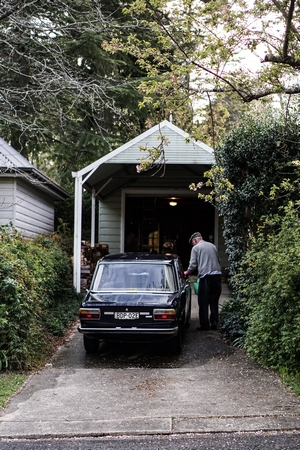

















|
|---|
|
Growing Older With Your Classic Byline: Lucy Wyndham Date: 25 July 2023 |
 Lancia 2000 Iniezione Lancia 2000 Iniezione
|
In Februrary 2013, James Rees of Worcester, PA won his place in the record books. The achievement? He had owned his 1951 Chevrolet Bel Air Coupe for 61 years, seven months and 24 days. That’s the longest anyone has ever owned a car they bought new. Every classic car owner has a story to tell about how and why they acquired their car. Some are the polar opposites of Mr Rees and seldom keep the same classic longer than a few months, making the most of the negligible depreciation to try as many driving experiences as possible.
But while Mr Rees might be an extreme example, there are plenty of classic owners out there who have lived with the same classic car for many years. For example, there are many who bought a classic in the 1980s or 90s, when it was just an “old car,” mothballed it while they started families of their own and now have the time to enjoy it and perhaps take the kids and grandkids for rides to car shows in it.
Of course, jumping into a low-slung sports car, or perhaps crawling underneath to investigate one of those famous classic car funny noises might not come quite as naturally today as it did in 1993. Growing older alongside a much-loved car can be fun, but can also be a frustration. Here are some tips to keep you smiling.
You’ve nothing to prove
You know the car inside and out. You once changed the clutch in two hours flat. We get it, there’s nothing you have to prove. Here’s the thing, you’ve been there and done that. Battling to undo bolts with arthritic fingers or lying on your back supporting the weight of a gearbox are games that start getting less fun somewhere around the age of 33.
If you are double that, do yourself, your worrying family and your local business community a favor and leave jobs like that to an expert. There are still plenty of “old school” mechanics around, many of whom specialize in classics. Make friends with one and help them stay in business!
Make use of facilities
There are more older drivers on the road than ever today, so even if you are up around the age that Mr Rees was when he entered the record books, there is nothing to stop you from continuing to enjoy your classic as long as your health and perception allow you do so without endangering yourself or anyone else.
There are plenty of helpful facilities out there for older drivers. For example, the ADA has quite strict rules that businesses are required to follow regarding accessible parking spaces for those who need a little extra room to maneuver, even after they’ve parked the car!
Also, the AOTA do some amazing work helping people maintain driving mobility in later years. They are particularly helpful if you are recovering from a stroke, hip replacement or other condition that might have left you a little less agile than you once were.
Consider some sympathetic upgrades
Let’s be clear about one thing. A Triumph Spitfire or Lotus Elan from the 1960s is never going to be easy to get in and out of. If you want a comfortable chariot for your later years, this isn’t it. Pass it on to someone who can get in and out of it and buy yourself something like that lovely Chevrolet, or if you’d rather stick with the British theme, perhaps a Rover P4. Those huge suicide doors make access easy for all.
In other cases, however, there’s no need to part with your beloved old set of wheels – but a few upgrades can make life much easier and safer. We are not talking dramatic changes, indeed, the best upgrades are not even noticeable from the outside. Here are a few that you can do for most popular classics:
Upgrade the lights. Night driving in a classic can be quite terrifying if you are relying on lights that were mediocre at best 50 years ago. Replace old sealed beam units with modern halogen alternatives. They look identical but produce way more light. Don’t go for a massive increase in wattage without checking the loom can take it though. Old drum brakes take some effort, especially if you need to stop suddenly. In most classics from the 1950s onward, there is a 4-pot caliper conversion available. Nobody will know it’s there when the wheels are on, and it could just save lives, as well as your classic car! If you’re lucky enough to own a larger classic from the era of big fins, you’ll know that reversing anywhere can be an act of faith. A rear camera is a modern innovation that can be retrofitted with relative ease. Mount the screen in the glove box and nobody will even suspect it is there.
Remember, as you and your classic get older, it is more important than ever to get a trusted mechanic on your side. He or she will be able to offer advice on these and other upgrades that are specific to your car.
